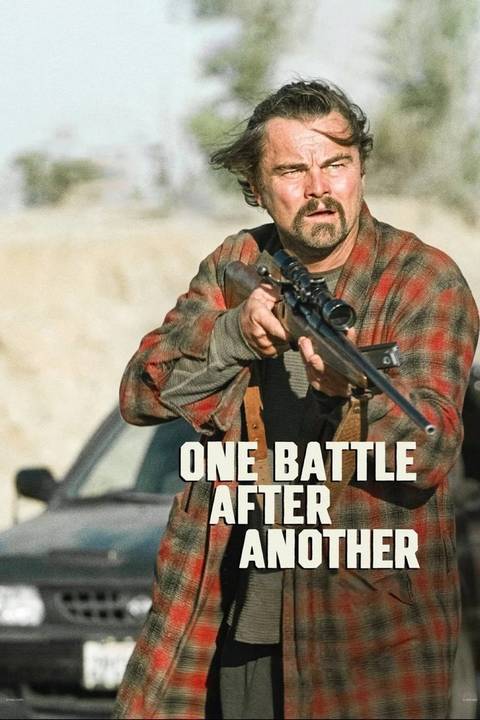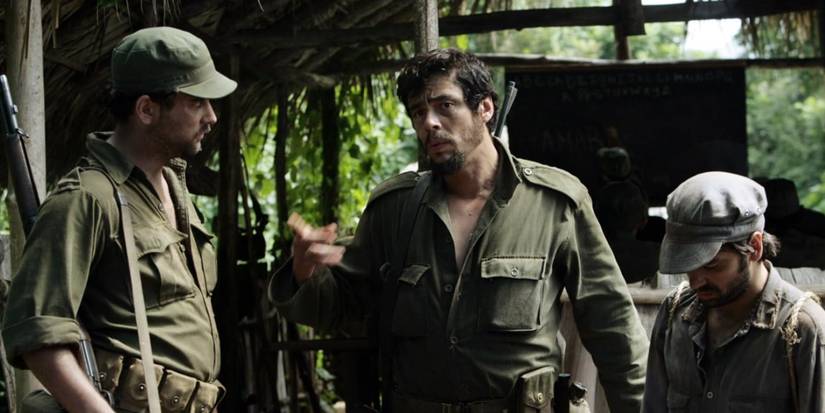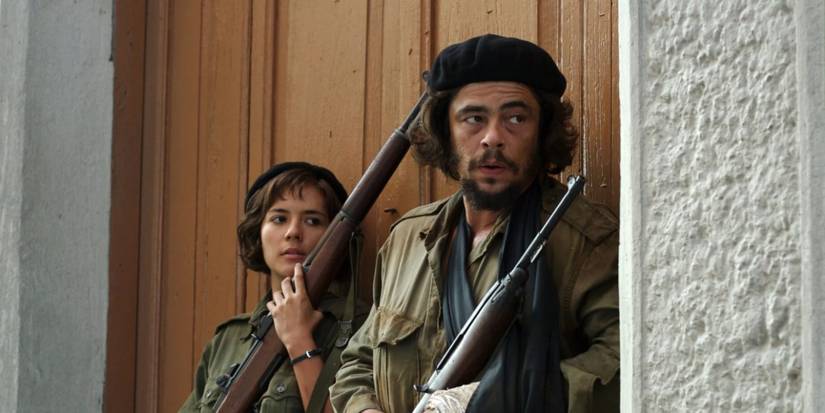Who gave the best performance in One Battle After Another? It’s a tough question, kinda like being asked to name your favorite child. Leonardo DiCaprio reminds us why he has been an A-lister for close to three decades, Teyana Taylor leaves us wondering why it took so long for her to get these big roles, and Sean Penn gives a masterclass on how to play an annoying character. Then there is the great Benicio del Toro, who is so calm you’d think he has been in this kind of movie before. Well, actually, he has.
Before we get into it, it’s appropriate to appreciate del Toro’s recent efforts. 2025 has been an incredible year for the actor, with his performance in Wes Anderson’s black comedy, The Phoenician Scheme, receiving the most praise. Award organization panels will have a hard time deciding whether to nominate him for that particular film or for One Battle After Another. The latter film is about a group of far-left American revolutionaries who fight against an oppressive government. The Paul Thomas Anderson flick has been hailed as the best thing to come out this year, but even though it deserves all the praise, it’s not the best revolution film that Benicio del Toro has been a part of. The honor belongs to Che.
Benicio del Toro Is Someone’s Crutch in Both ‘One Battle After Another’ and ‘Che’
One Battle After Another and Che (directed by Steven Soderbergh) are both revolution movies in which Benicio del Toro plays a “helper.” Each of his characters is an essential part of the plot, but they are facilitators, not the main liberators.
In One Battle After Another, Bob Ferguson (Leonardo DiCaprio) and Perfidia Beverly Hills (Teyana Taylor) — key members of the far-left revolutionary group known as the French 75 — are revealed to be a couple. They soon get a child named Willa, but when the heat on the group becomes too much, Perfidia disappears, never to be seen again. Bob then retires and goes into hiding, raising their daughter by himself.
16 years later, a grown and self-reliant Willa (Chase Infiniti) heads to a school dance only to be approached by a trusted member of the French 75, who informs her that a high-ranking colonel (portrayed by Sean Penn) is hunting down all the remaining revolutionaries. Willa thus goes with the person, leaving Bob unsure about her whereabouts. After escaping an attack at his home, Bob approaches Willa’s former karate teacher and community leader Sergio St. Carlos (Benicio del Toro) for help.
Sergio thus becomes Bob’s crutch, vowing to help him to the best of his abilities. When Bob gets arrested during another raid, Sergio helps break him out of jail. He then takes Bob on a drive to a convent where Willa is being sheltered by revolutionary nuns. But the journey becomes complicated, especially when police officers start pursuing them. This pursuit ends badly for Sergio.
In Che, Benicio del Toro plays Argentine Marxist revolutionary Ernesto “Che” Guevara. Che aids Fidel Castro and other revolutionaries in Cuba in their successful toppling of Fulgencio Batista’s dictatorship. He later attempts to bring revolution to Bolivia, but lightning fails to strike the same place twice.
‘Che’ Is a Stronger Revolution Movie Than ‘One Battle After Another’
Overall, One Battle After Another is a stronger and more entertaining movie than the two-part Che. By degrees, with incredible composure and patience, the rich narrative takes hold, and as the clock ticks, nearly every shot seems momentous. Its cinematography is brilliant, and the final chase scene is one of the best things you will ever see. Astounding landscapes rise and fall away; enticing characters glance and smile and disappear. While all this is happening, audiences are tempted to read the film as a remonstration film condemning a generation that has failed to correct injustices. But this elucidation, plausible though it is, fails to account for other things that we see in the blockbuster. Despite the fact that it’s packaged as a revolution movie, it’s really more of an action thriller.
PTA’s latest movie is more about love, friendship, and family than political stakes. Nothing changes on a broader level. The shadowy white supremacist group that shapes the events of the world remains in power when the final credits roll. On a smaller scale, we get a chaotic love story involving Bob and Beverly and a beautiful father-daughter tale. Not to forget the brilliant buddy arc involving Sergio.
Che, on the other hand, details every stage of the revolution. We get a front row seat as members of the 26 July Movement (the Castro-led group that had Che as one of the key generals) win over the rural peasant population of Cuba and continue to receive increasing support, while battling both government forces and traitors within their ranks. Eventually, victory comes. No other slice of cinema has captured the pathos, brittleness, and terrifying mystique of a revolution as vividly as this one.
The strategy of Steven Soderbergh and the writer, Peter Buchman, is clear: they perspectivize the world of the revolutionaries not from the visual point of view but from the mental one. The biopic doesn’t leave any hanging threads either. True to historical accounts, Che helps liberate Cuba before moving to Bolivia, strongly believing that he can repeat the success. This way, the movie gets to explore his delusion. In the Paul Thomas Anderson film, we never get to know how the revolutionaries fared after Bob’s current quagmire was solved. We never got to know what happened to Sergio either, after he helped Bob.
Benicio del Toro Exhibits Greater Range in ‘Che’
It has been argued that Benicio del Toro tends to impress more when playing supporting characters (or when he is part of an ensemble), and One Battle After Another kinda accentuates this notion, but Che proves that when given the right leading role, he’ll own it. In the 2008 movie, the actor completely immerses himself in the role, partly because he understood that he was playing a character who is worshipped by many people.
Paul Thomas Anderson wrote the character of Sergei as the typical calm guy who never panics in times of trouble. Any experienced actor would have had an easy time portraying such a person. All he had to do was act unfazed and demonstrate the utmost poise. The same cannot be said of Che. The film stretches across years of struggle, success, and downfall, so del Toro had to employ a wider range of emotions, whether it is aura, fatigue, or disappointment.
Because One Battle After Another isn’t really about del Toro’s character, the actor gets more room to relax. There is a high chance that the movie would still be interesting even if del Toro had done the bare minimum (kudos to him for going the extra mile). Che, on the other hand, gave him no room to relax. Che Guevara had to look cool; otherwise, fans and critics would protest.
Most importantly, the biographical movie gives us more of del Toro. Split into two parts, it has a total running time of about 270 minutes. We thus get to see every trick the actor is capable of pulling off. Additionally, he served as producer, helping to shape the film’s tone. When an actor has such creative investment in a project, it tends to reflect in their performance. Consequently, his performance won him Best Actor at Cannes. Guevara’s widow, Aleida March, would also praise del Toro’s performance.
A blockbuster lover might retort that del Toro in Che could use more pep and a crazier sense of humor (like that dancing scene in One Battle After Another after Sergio is arrested). Indeed, the film is often drab — the color feels washed out, and the lighting occasionally flat. Yet the leader biopic is sweetly gratifying as a sardonic elegy for a political dream that eventually went bust. It praises its recumbent hero with an appropriate wistful sigh of remorse rather than a blast of derision. And that’s good enough.

- Release Date
-
September 26, 2025
- Runtime
-
162 minutes
- Producers
-
Adam Somner



